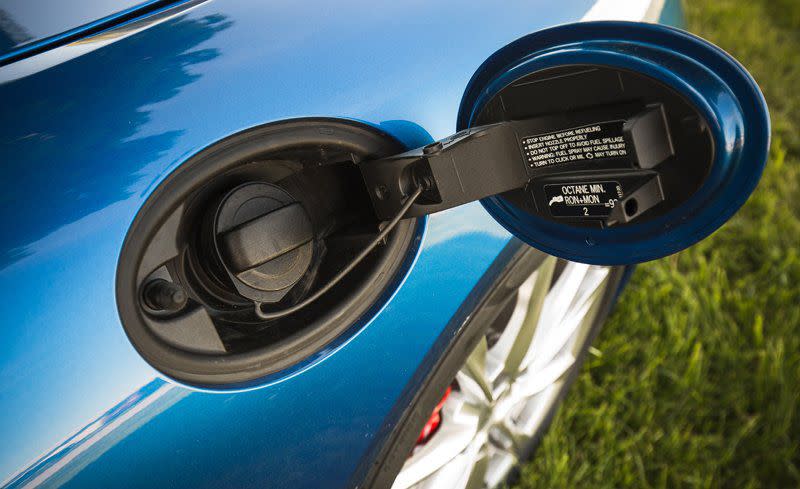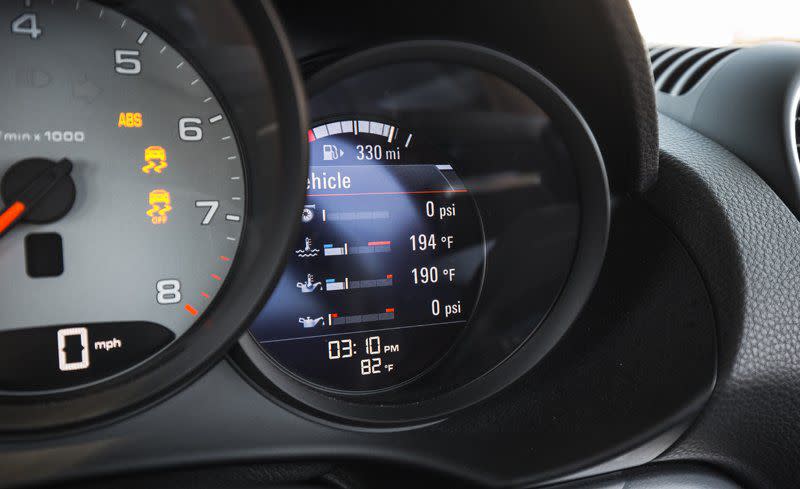Fuel Economy and Driving Range
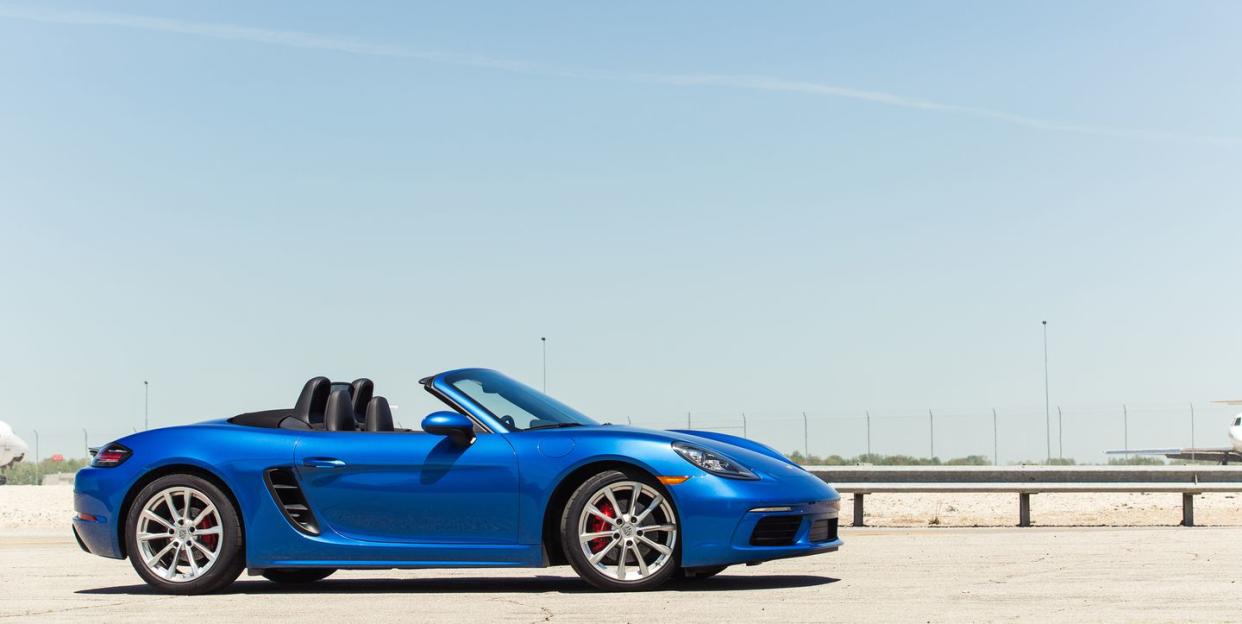
Fuel Economy and Driving Range Rating:

Puzzlingly, these two four-cylinder engines are not more efficient than the six-cylinder engines they replace, even losing ground on highway mpg in some cases. Still, both 718 Boxster models we’ve tested outperformed expectations in our real-world highway tests.
What’s New for 2018?
The standard 718 Boxster with its turbocharged 2.0-liter four-cylinder sees a slight reduction in its EPA ratings for 2018: All figures-city, highway, and combined-are down by 1 mpg across the board. The 718 Boxster S, which has the turbocharged 2.5-liter engine, receives the same ratings as last year, and we expect similar performance on our test loop from both vehicles. The new GTS model is less efficient by 1 mpg in all categories than the slightly less powerful Boxster S.
Fuel Economy Ratings Compared
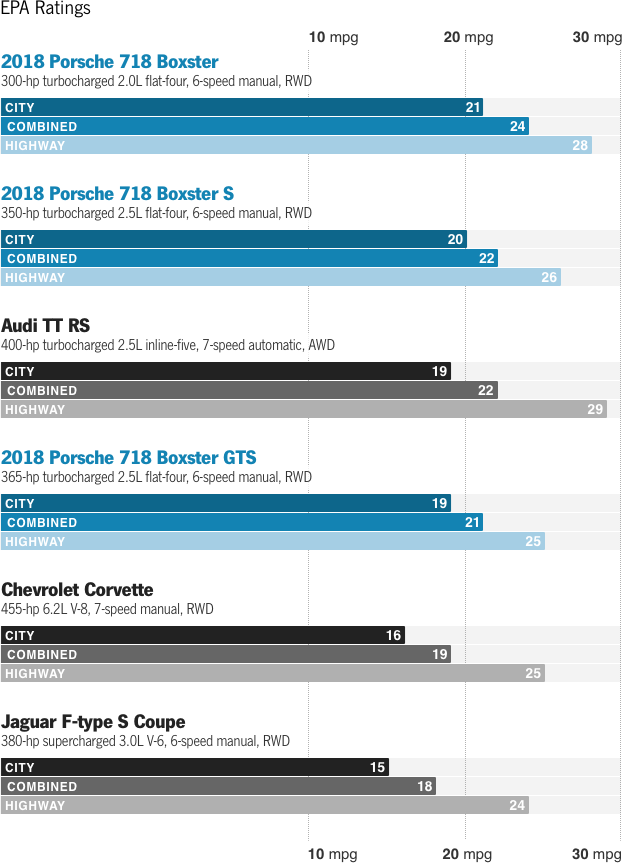
2017 Porsche 718 Boxster
The turbo 2.0-liter flat-four and six-speed manual that make up the Boxster’s entry-level powertrain are EPA rated to earn 21 mpg in the city and 28 mpg on the highway. Stepping up to the seven-speed dual-clutch automatic earns buyers 1 mpg extra in each category. The available turbo 2.5-liter flat-four matches the 2.0-liter six-speed’s EPA ratings when equipped with the seven-speed automatic but falls to 20 mpg city, 26 mpg highway with the six-speed manual.
Those ratings aren’t bad-in fact, they’re some of the best in this group. However, they’re not better than the EPA ratings of the Boxster’s previous engines, and, in the case of both the Boxster and the Boxster S, the new models are actually less efficient on the highway than the analogous powertrains from the previous generation. Despite the theoretical promise of fuel-economy gains from smaller, turbocharged engines, experience has shown us that they’re often not thriftier than the naturally aspirated engines that they replace. Don’t get us wrong-we’re glad of the power bump and the correspondingly quicker acceleration from these new engines, but it would be nice if they were actually more efficient, too, especially since we dearly miss the wail from the old flat-sixes.
Fuel Economy Ratings Compared
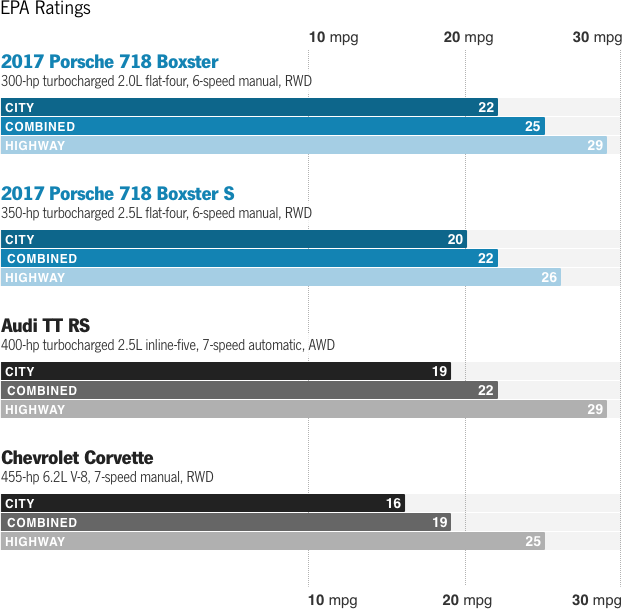
We’ve devised our own fuel-economy test in an attempt to replicate how most people drive on the highway. Our procedure entails a 200-mile out-and-back loop on Michigan’s I-94 highway. We maintain a GPS-verified 75 mph and use the cruise control as much as possible to mimic the way many drivers behave during long trips.
We’ve tested both a Boxster and a Boxster S on the highway, and both models outperformed their respective EPA ratings by an impressive 4 mpg. The 2.0-liter Boxster is the most efficient of this set, while the Boxster S and its larger fuel tank have the longest highway range in the group.
Test Results: Highway Fuel Economy
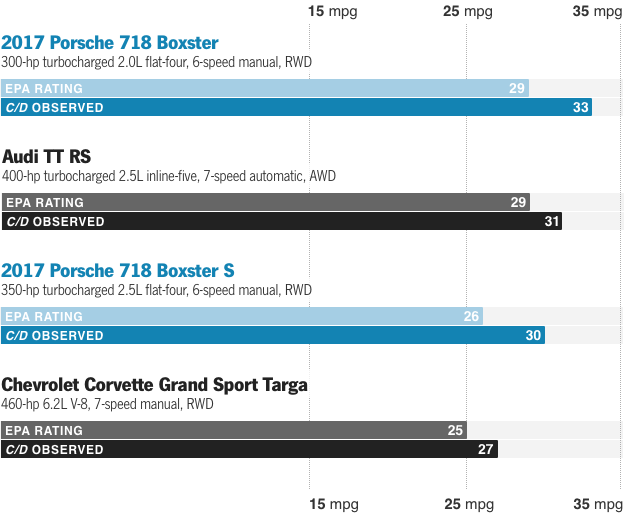
Test Results: Highway Range
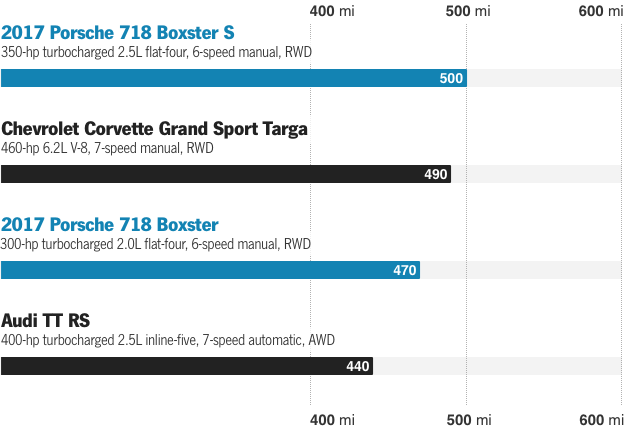
You Might Also Like
